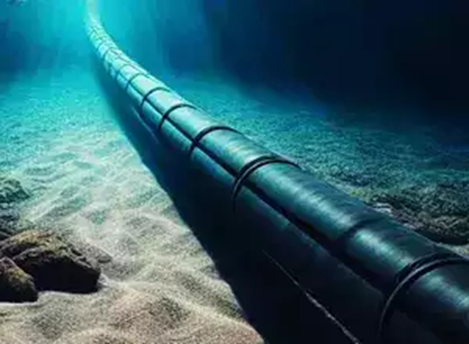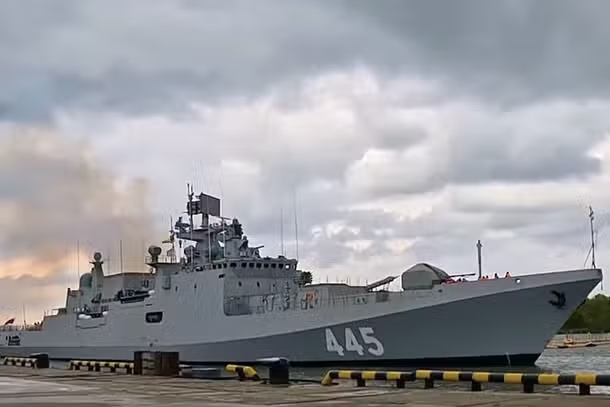- Courses
- GS Full Course 1 Year
- GS Full Course 2 Year
- GS Full Course 3 Year
- GS Full Course Till Selection
- Answer Alpha: Mains 2025 Mentorship
- MEP (Mains Enrichment Programme) Data, Facts
- Essay Target – 150+ Marks
- Online Program
- GS Recorded Course
- Polity
- Geography
- Economy
- Ancient, Medieval and Art & Culture AMAC
- Modern India, Post Independence & World History
- Environment
- Governance
- Science & Technology
- International Relations and Internal Security
- Disaster Management
- Ethics
- NCERT Current Affairs
- Indian Society and Social Issue
- NCERT- Science and Technology
- NCERT - Geography
- NCERT - Ancient History
- NCERT- World History
- NCERT Modern History
- CSAT
- 5 LAYERED ARJUNA Mentorship
- Public Administration Optional
- ABOUT US
- OUR TOPPERS
- TEST SERIES
- FREE STUDY MATERIAL
- VIDEOS
- CONTACT US
International Advisory Body for Submarine Cable Resilience Launched
International Advisory Body for Submarine Cable Resilience Launched

- Submarine telecommunication cables are a critical component of global communication infrastructure.
- These cables carry around 99% of internet traffic and support vital services including:
- Commerce
- Finance
- Government operations
- Digital health
- Education
- However, these cables are increasingly vulnerable to damage, which disrupts communication. It is estimated that 150-200 cable faults occur worldwide every year. Causes of damage include:
- Fishing activities
- Anchoring
- Natural hazards (e.g., earthquakes, tsunamis)
- Equipment failure
- Given their importance, ensuring the resilience of these cables has become a key concern for global stakeholders.
International Advisory Body for Submarine Cable Resilience:
- To address the growing challenges and secure the resilience of submarine cables, the International Telecommunication Union (ITU) and the International Cable Protection Committee (ICPC) have jointly launched the International Advisory Body for Submarine Cable Resilience in December 2024.
- This body is a strategic initiative aimed at ensuring the continued functionality of submarine cables, which are foundational to the global digital economy. The focus of the advisory body is to promote best practices to:
- Enhance cable resilience
- Minimize the risks of damage
- Ensure quick repair and deployment of cables
- Additionally, the body will focus on addressing several challenges:
- Increasing internet traffic
- Aging infrastructure
- Growing environmental threats to submarine cables
Advisory Body’s Role and Composition
- The International Advisory Body is composed of 40 members from around the world, including:
- Ministers
- Heads of regulatory authorities
- Senior telecommunications experts
- The members are representative of diverse global perspectives, with voices from small island nations as well as larger economies.
- This diversity ensures the body considers the needs of both those who rely on submarine cables for their livelihood and those responsible for deploying, maintaining, and protecting this infrastructure.
The primary objectives of the Advisory Body are:
- Promote Best Practices: Sharing knowledge and promoting policies that improve submarine cable protection.
- Provide Strategic Guidance: Addressing complex issues like infrastructure aging and new environmental threats.
- Strengthen Global Cooperation: Encouraging international collaboration on submarine cable protection and repair.
Leadership and Meetings
The body will be co-chaired by:
- Minister of Communications, Innovation, and Digital Economy of Nigeria
- Chair of the Board of Directors of Portugal’s National Communications Authority (ANACOM)
The advisory body will meet at least twice a year to discuss and implement policies related to:
- Submarine cable infrastructure
- Telecommunications policies
- Best practices for cable resilience
The inaugural meeting will take place virtually on December 12, 2024. A physical meeting will follow at the Submarine Cable Resilience Summit in Abuja, Nigeria in February 2025.
India’s Role in Global Submarine Cable Infrastructure:
- India plays a key role in the global submarine cable network.
- The country hosts around 17 international subsea cables across 14 distinct landing stations located in Mumbai, Chennai, Cochin, Tuticorin, and Trivandrum.
- As of the end of 2022, the total lit capacity and activated capacity of these cables stood at 138.606 Tbps and 111.111 Tbps, respectively.
Indian telecom operators involved in submarine cable infrastructure include:
- Tata Communications, which owns five cable landing stations in Mumbai, Chennai, and Cochin.
- Global Cloud eXchange (formerly Reliance Globalcom), which owns stations in Mumbai and Trivandrum.
- Reliance Jio, with cable landing stations in Chennai and Mumbai and new projects underway.
- Bharti Airtel, operating stations in Chennai and Mumbai, and also landing the 2Africa/EMIC-1 and SEA-ME WE 6 cables.
- Sify Technologies and BSNL, both involved in the operation of various cable landing stations.
- Vodafone and IOX, the latter planning to construct a new cable landing station in Puducherry.
About the ICPC:
The International Cable Protection Committee (ICPC), founded in 1958, is a global organization focused on the protection of submarine cables. The ICPC facilitates collaboration between:
- Governments
- Commercial entities
- Industry stakeholders
Its mission is to enhance the security of submarine cables by providing a platform for sharing technical, legal, and environmental information related to submarine cable protection.
Importance of Submarine Cable Resilience
- Submarine cables form the backbone of global communications, connecting continents and facilitating high-speed data transmission.
- As of 2024, more than 500 active and planned submarine cable systems exist worldwide.
- These cables transmit vast amounts of data with high efficiency and minimal signal loss, supporting critical applications such as:
- Financial trading
- Video conferencing
- Live streaming
- However, the infrastructure faces increasing challenges due to:
- Environmental hazards
- Aging systems
- Complex regulatory issues
- In 2023, over 200 submarine cable repairs were reported globally, highlighting the vulnerabilities of this critical infrastructure. Disruptions to these cables can lead to:
- Economic instability
- Security concerns
- Loss of internet access for millions of people
ITU’s Role in Strengthening Cable Resilience
- The International Telecommunication Union (ITU), as the UN agency for digital technologies, plays a pivotal role in enhancing the resilience of submarine cables. ITU's contributions include:
- International cooperation to protect submarine cables
- Standard-setting for submarine cable technologies
- Providing technical guidance for cable maintenance, damage prevention, and rapid recovery after disruptions
- Promoting sustainable industry practices
- Through the newly established International Advisory Body for Submarine Cable Resilience, ITU aims to develop and promote best practices for securing submarine cables worldwide, ensuring the continued smooth operation of global digital networks.
Conclusion
The formation of the International Advisory Body for Submarine Cable Resilience reflects a crucial step in safeguarding global communication infrastructure. With growing environmental challenges and increasing reliance on digital technologies, ensuring the resilience of submarine cables is essential for maintaining global connectivity and economic stability. The cooperation between ITU, ICPC, and other stakeholders will be instrumental in addressing the vulnerabilities of this vital infrastructure, with India playing a significant role in its development and maintenance.
Must Check: Best IAS Coaching In Delhi
UPSC Prelims Result 2024 Out: Expected Cut Off & Other Details, UPSC Prelims 2024 Answer with Explanation, Daily Prelims Quiz, Daily Current Affairs, MONTHLY CURRENT AFFAIRS TOTAL (CAT) MAGAZINE, Best IAS Coaching Institute in Karol Bagh, Best IAS Coaching Institute in Delhi, Daily Mains Question Answer Practice, ENSURE IAS UPSC Toppers, UPSC Toppers Marksheet, Previous Year Interview Questions, UPSC Syllabus




